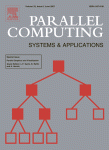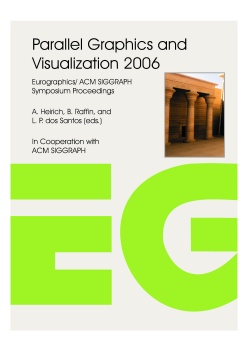[The Page Banner feature is not available in this web]
[The link bar feature is not available in this web]
![]()
Editor
|
|
|
|
Journal of Parallel Computing |
Computers
& Graphics |
|
Vol. 34, Issue 6 Graphics for Serious Games Eds.: Kurt Debattista, Alberto José
Proença, Luís Paulo Santos December, 2010 |
|
|
Volume 35, Issues
2 and 4 Special section on Cultural Heritage Eds.: Alan
Chalmers, Mark Mudge, Luis Paulo Santos April and November, 2011 |
|
|
Volume 37, Issue
7 Special section on High Dynamic Range Imaging Eds.: Luis Paulo
Santos and Kurt Debattista November, 2013 |
|
|
Volume 53, Issue
A1 Special section on the Spring Conference on
Computer Graphics 2015 (SCCG’2015) Eds.: Roman
Durikovic and Luis Paulo Santos June, 2015 |
|
|
|
|
|
"Parallel Graphics and Visualization 2006 |
"Parallel Graphics and
Visualization 2007 |
![]()
2015
Books
· Ricardo Marques, Christian Bouville, Luís
Paulo Santos, Kadi Bouatouch; "Efficient
Quadrature Rules for Illumination Integrals: From Quasi Monte Carlo to Bayesian
Monte Carlo"; Synthesis Lectures on Computer Graphics and Animation,
Morgan and Claypool Publishers, June, 2015
(DOI)
Book Chapters
· Luis Unzueta, Waldir Pimenta, Jon Goenetxea, Luís Paulo Santos, Fadi
Dornaika; “Efficient Deformable 3D
Face Model Fitting to Monocular Images”; in “Advances in Face Image Analysis: Theory and Applications”,
Chapter 8, pp. 143-168; Fadi Dornaika (ed.); Bentham eBooks; eISBN: 978-1-68108-110-6,
2015; ISBN: 978-1-68108-111-3E; 2015
(URL)
Jounal Papers
· Roberto Ribeiro, João Barbosa, Luís Paulo Santos; "A Framework
for Efficient Execution of Data Parallel Irregular Applications on
Heterogeneous Systems"; Parallel Processing Letters, vol. 25(2), June
2015
(DOI)
Jounal Editorials
· Roman Durikovic, Luís Paulo Santos; "Foreword to the Special
Section on the Spring Conference on Computer Graphics 2015 (SCCG’2015)";
Computers & Graphics, vol. 53(A1), 2015
(DOI)
2014
Jounal Papers
|
|
Luis Unzueta, Waldir Pimenta, Jon Goenetxea, Luís
Paulo Santos, Fadi Dornaika; “Efficient Generic Face Model Fitting to
Images and Videos”; Elsevier Image and Vision Computing, vol. 32(5), pp.
321-334; May, 2014 Vânio Ferreira, Luís Paulo Santos, Markus Franzen, Omar O. Ghouati, Ricardo Simões; “Improving FEM crash simulation
accuracy through local thickness estimation based on CAD data”; Elsevier Advances in Engineering Software;
vol. 71, pp. 52-62, May 2014 |
2013
Jounal Papers
|
|
Nuno Silva, Luís Paulo Santos; “Interactive
High Fidelity Visualization of Complex Materials on the GPU”; Elsevier
Computers & Graphics, vol. 37(7), pp. 809-819, November 2013 R.
Marques, C. Bouville, M. Ribardière,
L.P. Santos, K. Bouatouch, “Spherical Fibonacci Point Sets for
Illumination Integrals”, Computer Graphics Forum, vol. 32 (8), pp.
134-143, 2013 Marques,
Ricardo; Bouville, Christian; Ribardiére,
Mickael; Santos, Luís Paulo, Bouatouch, Kadi; “A
Spherical Gaussian Framework for Bayesian Monte Carlo Rendering of Glossy
Surfaces”, IEEE Transactions on Visualization and Computer Graphics, vol.
19 (10), pp. 1619-1632, October 2013 |
International Conferences
![]() L.
P. Santos, J. Wood, E. Selmanovic, C. Harvey, K. Debattista and A. Chalmers; “Bespoke high-fidelity visualization of
tiling”; HDRi 2013: First International Conference and
SME Workshop on HDR Imaging (short paper), Porto, Portugal, 2013
L.
P. Santos, J. Wood, E. Selmanovic, C. Harvey, K. Debattista and A. Chalmers; “Bespoke high-fidelity visualization of
tiling”; HDRi 2013: First International Conference and
SME Workshop on HDR Imaging (short paper), Porto, Portugal, 2013
(link)
Jounal
Editorials
Luís Paulo Santos, Kurt Debattista, “Guest editorial – high dynamic range imaging”, Elsevier Computers & Graphics, ISSN 0097-8493, vol. 37 (7), pp. A11-A12, November 2013 (Available online 12 August 2013)
(DOI; Link)
2012
Jounals
|
|
João
M. Fernandes, Natascha van Hattum-Janssen,
António Nestor Ribeiro, Victor Fonte, Luís Paulo Santos & Pedro Sousa |
International Conferences
|
|
Artur Mariano, Ricardo Alves, Joao Barbosa, Luis
Paulo Santos and Alberto Proença; “A (ir)regularity-aware
task scheduler for heterogeneous platforms”; International
conference on High Performance Computing Kyiv, Ukraine; October, 2012 (Link) Alves,
Albano; Rufino, José; Pina, António; Santos, Luís
Paulo; “clOpenCL – Supporting Distributed Heterogeneous
Computing in HPC Clusters”; Tenth
International Workshop HeteroPar'2012
-Algorithms, Models and Tools for Parallel Computing
on Heterogeneous Platforms; Lecture Notes in Computer Science 7640 (Euro-Par
2012 Workshops), Springer, Heidelberg, pp. 112-122, 2012 (Link) Silva
, Nuno; Santos , Luís Paulo; Fussell , Donald; ” Real-Time Visualization
of a Sparse Parametric Mixture Model for BTF Rendering”; International
Symposium on Visual Computing 2012; G. Bebis et
al. (Eds.): ISVC 2012, Part I, Lecture Notes in Computer Science 7431, pp.
719--728, Springer, Heidelberg (2012) Pimenta, W., Santos, L.P.: “A
Comprehensive Taxonomy for Three-dimensional Displays”; 20th WSCG International Conference on
Computer Graphics, Visualization and Computer Vision 2012;, Plzen, Czech
Republic, June, 2012 [0] |
National Conferences
|
|
Silva, Nuno and Santos, Luís Paulo; “Visualização em Tempo
Real de um Modelo Esparso de Mistura Paramétrica para síntese da BTF”; 20º Encontro
Português de Computação Gráfica; Viana do Castelo, Portugal, 2012 Maçães,
Gustavo; Domingues;
Hugo; Almeida, Luís and
Santos, Luís Paulo; “Captura,
reconhecimento e visualização de atividades manuais complexas”; 20º
Encontro Português de Computação Gráfica; Viana do Castelo, Portugal, 2012 (Link) |
2011
Jounals
|
|
Ferreira, V.; Santos, L.P.;
Franzen, M.; Ghouati, O.O.; Simoes, R.; “Estimating Local Part Thickness in
Midplane Meshes for Finite Element Analysis”, International Journal of Mathematics and Computers In Simulation, Volume 5, pp. 69 (2011) |
Conferences
|
|
Elizabeth Simão Carvalho, Hugo Domingues, Gustavo Maçães, Luís Paulo Santos; “Augmented Reality Visualization and Edition of
Cognitive Workflow Capturing”, First Experiment@ Int. Conference (exp.at’11), Lisboa
(2011) |
2010
Jounals
|
|
Debattista,
Kurt and Dubla, Piotr and Santos, Luís Paulo and Chalmers, Alan; International
Conferences
|
2009
Jounals
|
|
Debattista,
Kurt and Dubla, Piotr and Banterle, Francesco and Santos, Luís Paulo and
Chalmers, Alan; |
International
Conferences
|
|
Dubla,
Piotr and Debattista, Kurt and |
National
Conferences
|
|
Marques, Ricardo and Santos, Luís Paulo; Nunes, Miguel and Santos, Luís Paulo; |
2007
Jounals
|
|
Chalmers,
Alan and Debattista, Kurt and |
2006
International Conferences
|
|
Chalmers, Alan and Debattista, Kurt
and Santos, Luís Paulo; |
|
|
Oliveira, António and Santos, Luís
Paulo and Proença, Alberto; |
|
|
|


